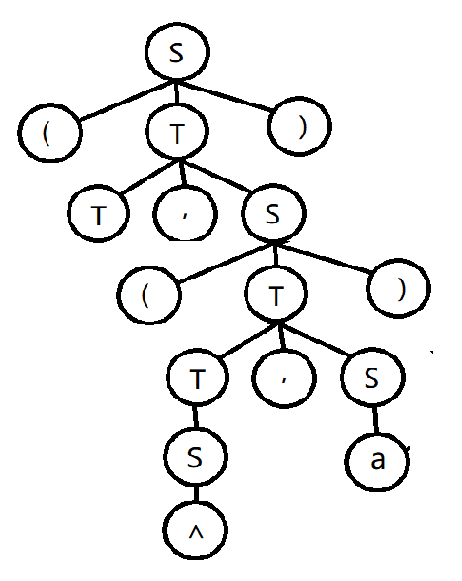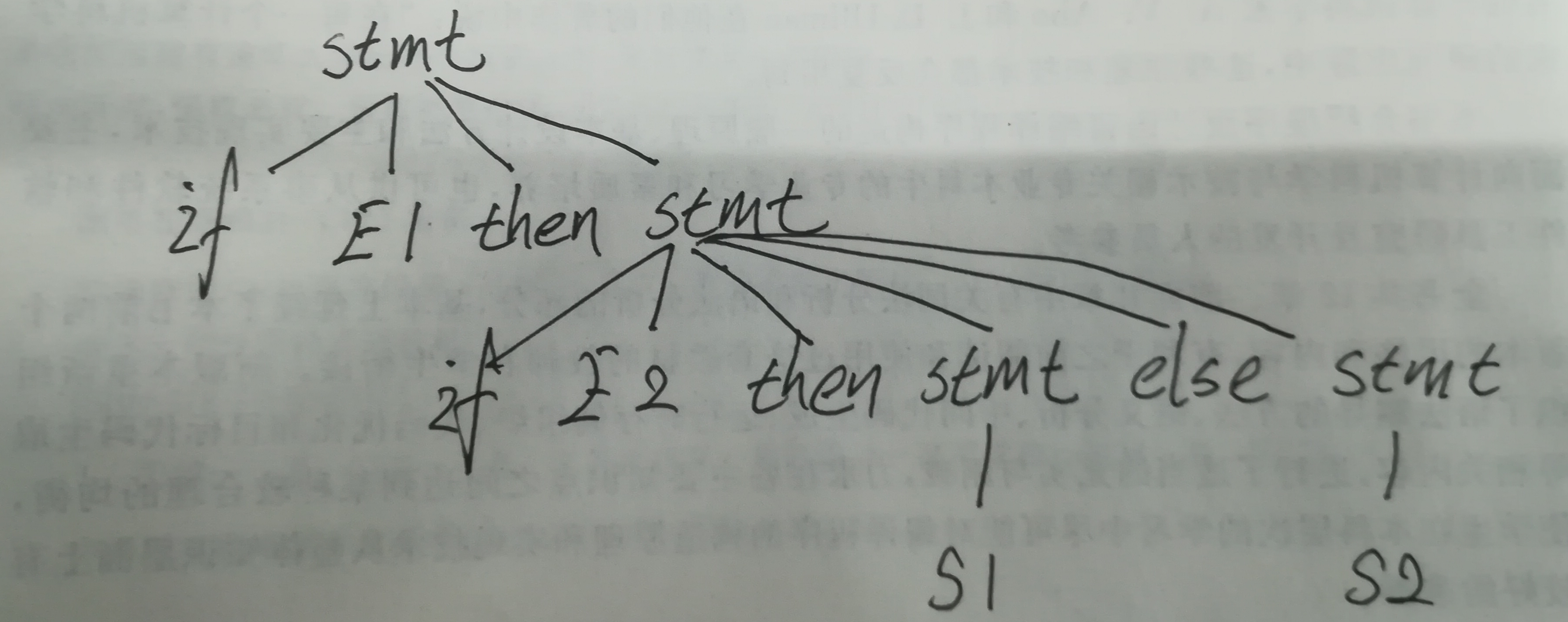1.已知文法:
S->a|^|(T)
T->T,S|S
分析句型(T,(^,a)),求全部的短语、直接短语和句柄
答:
该句型的左推导为:
S->(T)
->(T,S)
->(T,(T))
->(T,(T,S))
->(T,(S,S))
->(T,(^,S))
->(T,(^,a))
根据推导得文法树如下:

文法树可得:
短语:
^ ^,a (^,a) T,(^,a) (T,(^,a))
直接短语:
T , ( ) ^ , a
句柄:
T
2.构造上下文无关文法,描述语言:
{a^nb^n|n>=0}
{a^mb^n|m>=n>=0}
{(ab^n|n>=0}
{a^mb^n|m,n>=1}
if语句
答:
G[S]:S->aSb|ab|ε|1
G[S]:S->aSbS|a|b|ε|1
G[S]:S->abS|ab|ε|1
G[S]:S->aSbS|a|b|ε
3.如果if语句的方法:
stmt->if expr then stmt
| if expr then stmt else stmt
| other
句子if E1 then if E2 then S1 else S2是否有两棵不同的语法树?说明了什么?
答:
由左推导得(一):
stmt->if expr then stmt
->if expr then stmt
->if E1 then if expr then stmt else stmt
->if E1 then if E2 then stmt else stmt
->if E1 then if E2 then S1 else stmt
->if E1 then if E2 then S1 else S2
语法树(一):

由左推导得(二):
stmt->if expr then stmt else stmt
->if E1 then stmt else stmt
->if E1 then if expr then stmt else stmt
->if E1 then if E2 then stmt else stmt
->if E1 then if E2 then S1 else stmt
->if E1 then if E2 then S1 else S2
语法树(二):

所以该句子存在两棵不同的语法树,则说明该文法是二义的